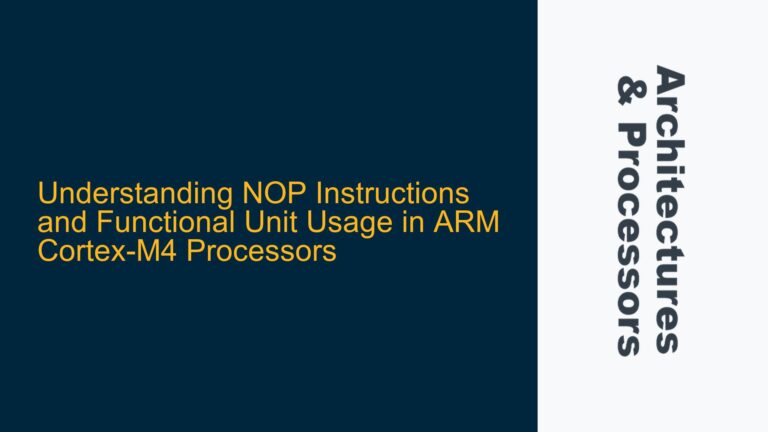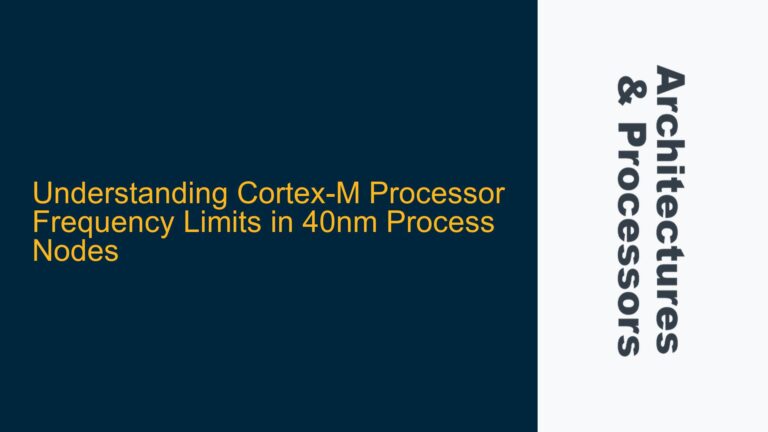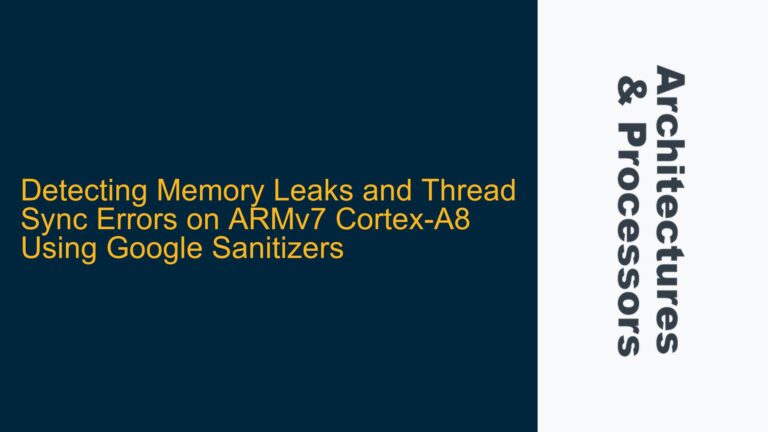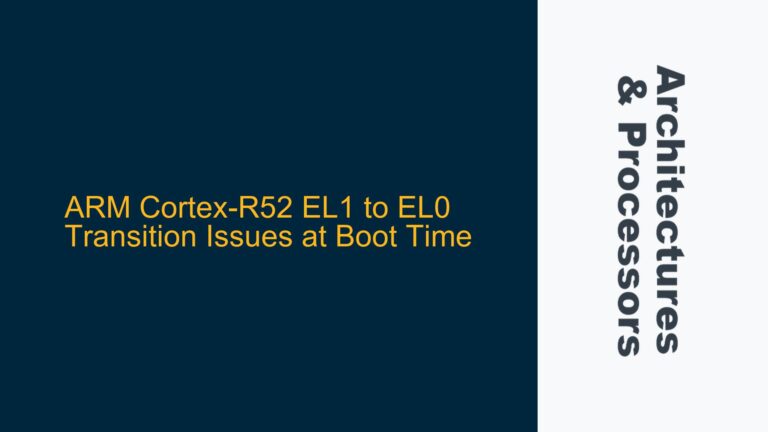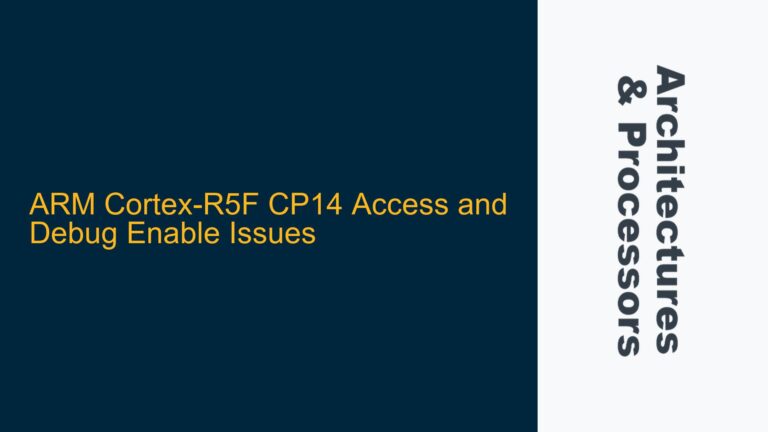Cycle-Accurate Cortex-M3 Simulation Using Obfuscated RTL
The development of a cycle-accurate Cortex-M3 simulator using obfuscated RTL (Register Transfer Level) presents a unique set of challenges and opportunities. The Cortex-M3, a popular ARM processor core, is widely used in embedded systems due to its balance of performance, power efficiency, and cost-effectiveness. However, creating a cycle-accurate simulation environment for this processor using obfuscated RTL requires a deep understanding of both the ARM architecture and the intricacies of RTL simulation. This post will explore the technical hurdles, potential causes of issues, and detailed solutions for implementing such a simulator.
ARM Cortex-M3 Obfuscated RTL Simulation Challenges
The primary challenge in creating a cycle-accurate Cortex-M3 simulator using obfuscated RTL lies in the complexity of the RTL itself. Obfuscated RTL is designed to protect intellectual property, making it difficult to understand and modify. This obfuscation can introduce subtle issues that are hard to diagnose, especially when the goal is to achieve cycle accuracy. Cycle accuracy requires that the simulator replicates the exact behavior of the hardware, including the timing of each instruction and data transfer. This level of precision is crucial for debugging and performance analysis but is difficult to achieve with obfuscated RTL.
Another challenge is the integration of peripherals and interfaces. The Cortex-M3 processor communicates with peripherals via the AXI (Advanced eXtensible Interface) bus, and simulating this bus accurately is essential for a functional virtual system platform. Additionally, the JTAG (Joint Test Action Group) interface, used for debugging, must be simulated to allow for realistic debugging scenarios. The complexity of these interfaces, combined with the obfuscated nature of the RTL, can lead to significant implementation challenges.
Finally, the performance of the simulator is a critical concern. Simulating RTL on a modern PC is inherently slower than running the actual hardware, and the obfuscation can further reduce performance. Estimating the achievable simulation frequency is difficult, but it is likely to be in the range of 10kHz to 1MHz, depending on the complexity of the design and the capabilities of the host machine.
Potential Causes of Simulation Inaccuracies and Performance Issues
The potential causes of simulation inaccuracies and performance issues in a cycle-accurate Cortex-M3 simulator using obfuscated RTL can be broadly categorized into three areas: RTL obfuscation, peripheral integration, and simulation performance.
RTL obfuscation can introduce inaccuracies by making it difficult to understand and modify the RTL code. Obfuscation techniques, such as renaming signals and adding dummy logic, can obscure the true behavior of the design. This can lead to subtle timing issues that are hard to detect and correct. Additionally, obfuscated RTL may not be optimized for simulation, leading to unnecessary complexity and reduced performance.
Peripheral integration is another potential source of inaccuracies. The AXI bus and JTAG interface must be simulated accurately to ensure that the virtual system platform behaves like the real hardware. However, simulating these interfaces can be challenging, especially when dealing with obfuscated RTL. Inaccuracies in the simulation of these interfaces can lead to incorrect behavior in the virtual system, making it difficult to debug and analyze the system.
Simulation performance is a critical factor in the usability of the simulator. Simulating RTL on a modern PC is inherently slower than running the actual hardware, and the obfuscation can further reduce performance. The complexity of the Cortex-M3 design, combined with the need for cycle accuracy, can lead to significant performance bottlenecks. Additionally, the simulation of peripherals and interfaces can further reduce performance, making it difficult to achieve a usable simulation frequency.
Implementing a Cycle-Accurate Cortex-M3 Simulator with Obfuscated RTL
To implement a cycle-accurate Cortex-M3 simulator using obfuscated RTL, several steps must be taken to address the challenges and potential causes of inaccuracies and performance issues. These steps include RTL analysis and modification, peripheral integration, and performance optimization.
RTL analysis and modification is the first step in creating a cycle-accurate simulator. The obfuscated RTL must be analyzed to understand its behavior and identify any potential issues. This may involve reverse-engineering the obfuscated code to uncover the true behavior of the design. Once the RTL has been analyzed, it may be necessary to modify the code to improve simulation accuracy and performance. This could involve removing unnecessary obfuscation, optimizing the design for simulation, and adding instrumentation to aid in debugging.
Peripheral integration is the next step in creating a functional virtual system platform. The AXI bus and JTAG interface must be simulated accurately to ensure that the virtual system behaves like the real hardware. This may involve creating custom simulation models for these interfaces or modifying existing models to work with the obfuscated RTL. Additionally, the simulation of peripherals, such as UART, SPI, and I2C, must be integrated into the virtual system to provide a realistic environment for testing and debugging.
Performance optimization is the final step in creating a usable cycle-accurate simulator. The simulation performance must be optimized to achieve a usable simulation frequency. This may involve optimizing the RTL code for simulation, reducing the complexity of the design, and using performance-enhancing techniques, such as parallel simulation and hardware acceleration. Additionally, the simulation of peripherals and interfaces must be optimized to reduce performance bottlenecks.
In conclusion, creating a cycle-accurate Cortex-M3 simulator using obfuscated RTL is a complex and challenging task. However, by carefully analyzing and modifying the RTL, accurately simulating peripherals and interfaces, and optimizing simulation performance, it is possible to create a functional and usable virtual system platform. This platform can be used for debugging, performance analysis, and system development, providing a valuable tool for embedded systems engineers.


